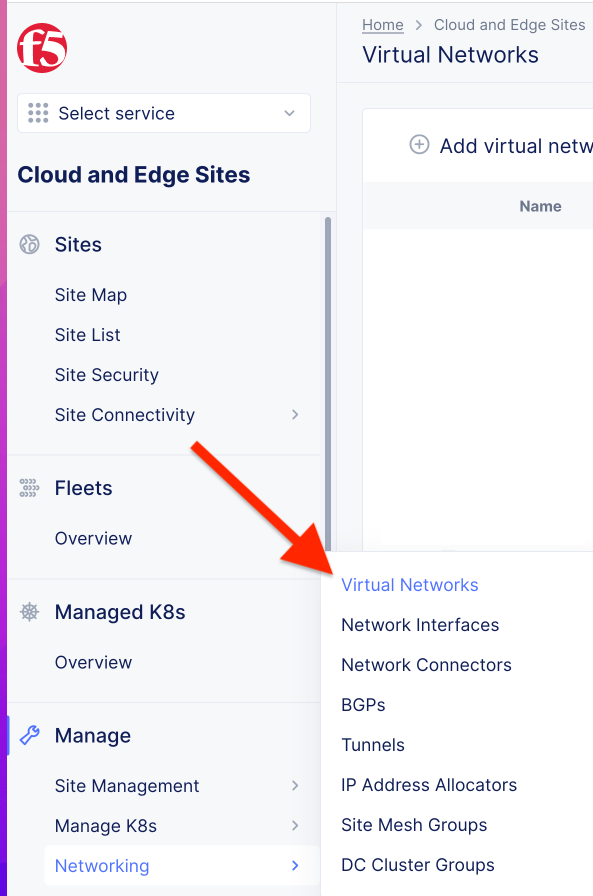Virtual Network¶
The first network configuration task is to define a Virtual Network. This will define how sites will connect to each other and whether they will advertise network routes between sites or rely on source address translation.
Exercise 1: Examine Global Network Client¶
Before we create a Virtual Network login to the “Global Network Client” in UDF via web shell or ssh.
Run
netstat -rnto observe the route table.ubuntu@ubuntu:~$ netstat -rn Kernel IP routing table Destination Gateway Genmask Flags MSS Window irtt Iface 0.0.0.0 10.1.20.6 0.0.0.0 UG 0 0 0 ens6 10.1.1.0 0.0.0.0 255.255.255.0 U 0 0 0 ens5 10.1.20.0 0.0.0.0 255.255.255.0 U 0 0 0 ens6 172.17.0.0 0.0.0.0 255.255.0.0 U 0 0 0 docker0
Observe that this device is pointing to the F5 Distributed Cloud Gateway Site Local Inside (sli)interface (10.1.20.6).
Next run
systemd-resolve --statusand see that the F5 Distributed Cloud Gateway is also configured as the only DNS resolver for this host.$ systemd-resolve --status ... Link 3 (ens6) Current Scopes: DNS ... DNS Servers: 10.1.20.6 ...
Try to resolve a DNS name and access an external service.
ubuntu@ubuntu:~$ ping -w 3 8.8.8.8 PING 8.8.8.8 (8.8.8.8) 56(84) bytes of data. --- 8.8.8.8 ping statistics --- 3 packets transmitted, 0 received, 100% packet loss, time 2051ms ubuntu@ubuntu:~$ curl -m 3 www.f5.com curl: (28) Resolving timed out after 3514 milliseconds
Exercise 2: Create Virtual Network¶
From the Cloud and Edge Sites context go under “Manage”->”Networking”->”Virtual Networks”.

Click on “Add Virtual Network”.
Provide a name, i.e. ([your namespace]-global) and specify “Global Network” as the specified type. This will allow the sites to extend their network into other sites (requires non-overlapping IP space accross sites). You can also specify a network type of “Site Local” to specify that you want the network to be specific to the Site (not shared).
Click on “Save and Exit”